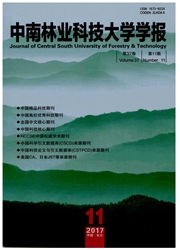

 中文摘要:
中文摘要:
于2013年7月对东山岛4条沙滩潮间带断面大型底栖动物进行采样调查。根据游憩人数,将采样区设置为重度游憩利用区、中度游憩利用区、轻度游憩利用区及对照区。结果表明:游憩人数对大型底栖动物的种类数、生物量、栖息密度、物种多样性指数、丰富度指数等有极显著性影响(P〈0.01),呈负相关关系;游憩人数对均匀度指数无显著性影响(P〉0.05),相关程度极小;水温、p H值、盐度、溶解氧对大型底栖动物种类、生物量、栖息密度、物种多样性指数、丰富度指数、均匀度指数无显著性影响(P〉0.05)。群落分布聚类与MDS排序分析结果基本吻合,4个取样断面群落分为3组,Ⅰ组重度区游憩利用、中度区游憩利用,Ⅱ组轻度游憩利用区和Ⅲ组对照区。游憩活动对大型底栖动物的冲击程度为重度游憩利用区〉中度游憩利用区〉轻度游憩利用区〉对照区,大型底栖动物群落分布受游憩活动干扰影响,干扰强度越大,种类数、生物量、栖息密度越少。
 英文摘要:
英文摘要:
In July 2013, sampling analysis of four intertidal beach large benthic animalsin in Dongshan island were carried out. According to the recreational number, set the sampling area to heavy, moderate, mild recreation use area and control area,.Tbe results showed that Recreational number had very significant effects (P 〈 0.01) on species, biomass, inhabit density, species diversity index, richness index and so on of macrobenthos, there was a negative correlation. And recreation number had no significant effect on evenness index (P 〉 0.05), just minimal correlation degree. Water temperature, pH, salinity, dissolved oxygen had no significant effect (P 〉 0.05) on species, biomass, inhabit density and the species diversity index, richness index and evenness index of macrobenthos, the results of community distribution clustering and MDS ordination analysis were basically consistent. 4 sampling sections were divided into 3 groups, group I of heavy for recreation use, moderate for area recreation use, group II of mild for recreation use area and group III for control area. Recreational activities with a severe impact on macrobenthos was heavy recreation use area 〉 moderate recreation use area 〉 mild recreation use area 〉 control area, macrobenthos distribution affected by recreational activities interference, the larger the disturbance intensity, the lower the species number, biomass and density of habitat.
 同期刊论文项目
同期刊论文项目
 同项目期刊论文
同项目期刊论文
 期刊信息
期刊信息
